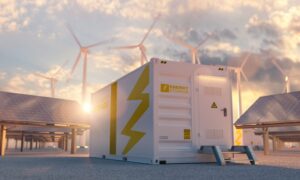
Grid storage fire risks are making alternative battery chemistries critical, warns tech innovator
WOBURN, Mass.–(BUSINESS WIRE)–Alsym™ Energy, a developer of next-generation rechargeable batteries, is raising awareness of the dangers of using lithium-ion (Li-ion) batteries in grid storage facilities, especially in California and other areas that are prone to wildfires. As California enters its peak fire season, highly flammable and toxic Li-ion batteries may be vulnerable to catching fire or failing due to elevated ambient temperatures, creating additional instability in the power grid as climate change causes increasingly devastating wildfires.
Grid storage fires are especially dangerous in California, where wildfires are on the rise. When a single battery storage container at the Moss Landing Elkhorn Battery Energy Storage Facility in CA caught fire in October 2022, it took two fire crews with four engines nine hours to extinguish the blaze, with several first responders staying on-site overnight in case of re-ignition. While the response was manageable in that instance, a fire at a battery storage facility during a wildfire could divert significant first-responder resources away from the larger disaster.
“As more states adopt renewable power sources, storage becomes increasingly vital to grid stability. But most storage facilities use lithium-ion batteries, which can catch fire or generate toxic gasses if they get too hot,” says Alsym CEO Mukesh Chatter. “Not only do burning Li-ion batteries release harmful chemicals into the air and soil, losing storage capacity has the potential to significantly disrupt fragile power grids and complicate disaster response—a major issue for hospitals, communications systems, and other infrastructure that may have limited backup capacity.”
The growing popularity of lithium-ion home storage systems could further complicate fire responses. While local utilities require a 100-foot firebreak around substations, the same does not apply to residences in wooded areas. During a wildfire, batteries located in garages or attached to exterior walls may catch fire when exposed to flames or high temperatures, creating a dangerous situation for residents and first responders alike.
“Clean energy initiatives put more focus on renewables, requiring more storage to manage intermittent supply,” says Dr. Kripa Varanasi, Alsym Co-Founder and Professor of Mechanical Engineering at MIT. “When it comes to wildfires, burning lithium-ion batteries would make a bad situation worse. We need new inherently non-flammable battery chemistries that do not contain toxic materials to serve our energy needs without endangering our environment, our homes, and our lives.”




